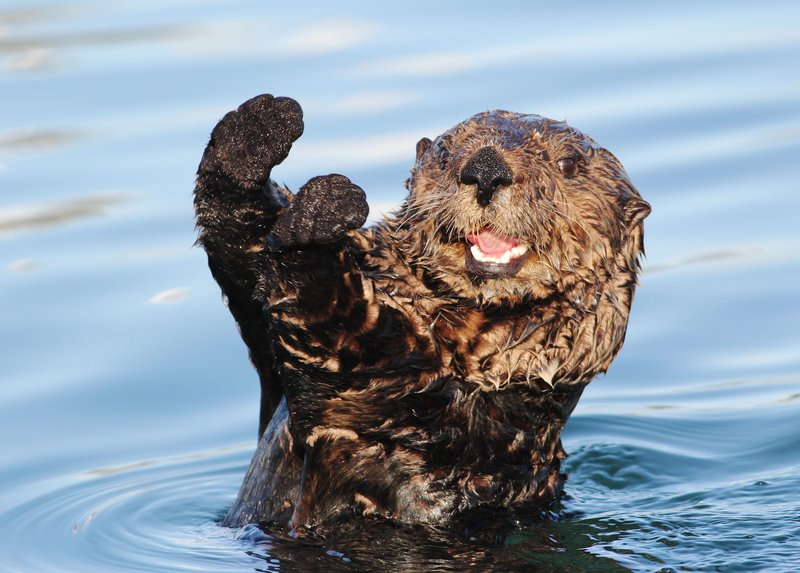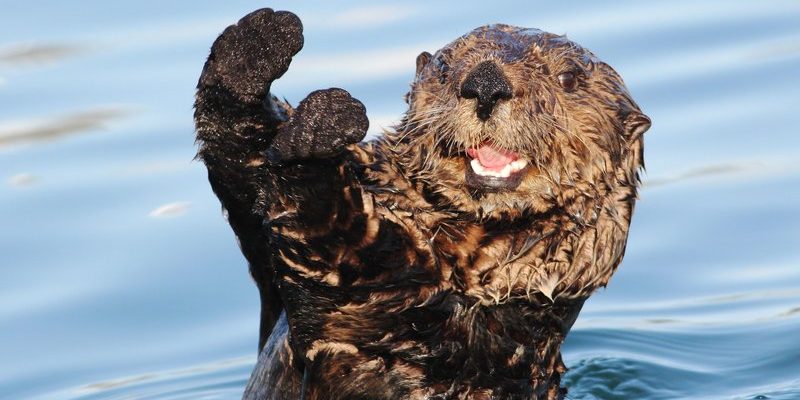
Their presence has a ripple effect on the environment, influencing everything from kelp forests to the populations of sea urchins. So, let’s dive in and explore just how these furry friends contribute to their watery homes, and why their conservation matters to all of us.
Understanding the Sea Otter’s Habitat
Sea otters thrive along the coasts of the North Pacific Ocean, from Alaska down to California. They prefer rocky coastal areas and kelp forests, where they can find plenty of food. These habitats are full of life, and sea otters play a crucial role in keeping them healthy. Think of them as the clean-up crew of the kelp forest—without them, the ecosystem could become unbalanced.
Kelp forests are underwater gardens that provide shelter and food for various marine species. When sea otters are present, they help control the population of sea urchins. Sea urchins love to munch on kelp, and when their numbers increase, they can decimate these forests. By eating sea urchins, sea otters help maintain the delicate balance of the ecosystem.
The Impact of Sea Otters on Kelp Forests
Kelp forests are crucial ecosystems that support numerous marine life forms. When sea otters feed on sea urchins, they prevent the overgrazing of kelp. This is important because healthy kelp forests provide shelter, breeding grounds, and food for fish, crabs, and various other creatures. If you’ve ever walked along a beach and admired the beauty of the ocean, chances are you have these vibrant underwater forests to thank.
Moreover, kelp forests act as carbon sinks, absorbing carbon dioxide from the atmosphere and helping to combat climate change. So, when sea otters help kelp thrive, they’re not just maintaining a pretty view; they’re also playing a role in fighting one of the biggest challenges of our time. That’s pretty impressive for a creature that spends its days floating on its back!
Sea Otters and Their Role in Biodiversity
Sea otters are essential for promoting biodiversity in their ecosystems. By keeping the population of sea urchins in check, they allow many other species to flourish. This, in turn, supports a diverse community of marine life. More species mean a more resilient ecosystem, which is important for adapting to changes and challenges over time.
Imagine a yard full of colorful flowers. If one type of flower takes over, it can choke out the others and create a less vibrant, less diverse space. It’s the same in the ocean. Sea otters help ensure that a variety of species can thrive, creating a balanced and flourishing underwater environment.
Threats Facing Sea Otters
Despite their importance, sea otters face numerous threats. Oil spills, habitat destruction, and climate change are just a few of the challenges they encounter. Oil spills can coat their fur, making it lose its insulating properties, which is crucial for their survival in cold waters. Plus, with warming oceans, the delicate balance of coastal ecosystems is at risk.
In addition, human activities such as fishing and coastal development also put pressure on their populations. It’s like trying to juggle while someone keeps throwing more and more balls your way—eventually, something will drop. That’s why conservation efforts are critical for ensuring these fuzzy companions continue to thrive in their natural habitats.
Conservation Efforts and What You Can Do
Conservation organizations across the globe are working to protect sea otters and their habitats. These efforts include creating protected areas, conducting research, and restoring damaged ecosystems. Every little bit helps, and there are steps we can all take to support these initiatives.
You might be wondering what you can do. Here are some simple actions that can make a big difference:
- Reduce plastic use to minimize pollution in oceans.
- Support conservation organizations dedicated to sea otter protection.
- Be mindful of your seafood choices; opt for sustainable options.
- Get involved in local clean-up efforts at beaches and coastal areas.
Remember, protecting sea otters means protecting the entire marine ecosystem. These actions may seem small, but collectively they can lead to significant change.
Final Thoughts on the Importance of Sea Otters
Sea otters are more than just charming animals—they’re vital to the health of their ecosystems. Their role in maintaining kelp forests, promoting biodiversity, and balancing marine life is crucial for a healthy ocean. Each one of us has a part to play in ensuring these adorable creatures continue to thrive.
So next time you see a sea otter floating on its back, remember the important job it’s doing. By protectingsea otters, we’re not just saving a species; we’re supporting the intricate web of life in our oceans. Let’s be the stewards of our environment, ensuring that future generations can enjoy the beauty and benefits that these remarkable animals provide.

